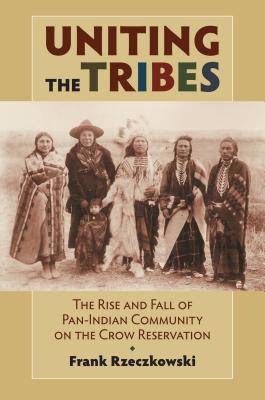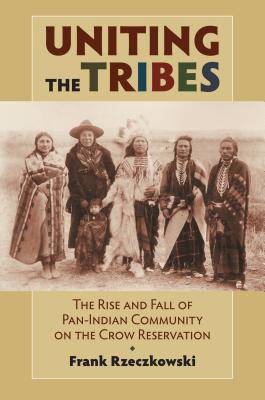
- Retrait gratuit dans votre magasin Club
- 7.000.000 titres dans notre catalogue
- Payer en toute sécurité
- Toujours un magasin près de chez vous
- Retrait gratuit dans votre magasin Club
- 7.000.0000 titres dans notre catalogue
- Payer en toute sécurité
- Toujours un magasin près de chez vous
Uniting the Tribes
The Rise and Fall of Pan-Indian Community on the Crow Reservation
Frank Rzeczkowski
Livre relié | Anglais
44,95 €
+ 89 points
Description
Native American reservations on the Northern Plains were designed like islands, intended to prevent contact or communication between various Native peoples. For this reason, they seem unlikely sources for a sense of pan-Indian community in the late-nineteenth and early-twentieth centuries. But as Frank Rzeczkowski shows, the flexible nature of tribalism as it already existed on the Plains subverted these goals and enabled the emergence of a collective "Indian" identity even amidst the restrictiveness of reservation life. Rather than dividing people, tribalism on the Northern Plains actually served to bring Indians of diverse origins together. Tracing the development of pan-Indian identity among once-warring peoples, Rzeczkowski seeks to shift scholars' attention from cities and boarding schools to the reservations themselves. Mining letters, oral histories, and official documents--including the testimony of native leaders like Plenty Coups and Young Man Afraid of His Horses--he examines Indian communities on the Northern Plains from 1800 to 1925. Focusing on the Crow, he unravels the intricate connections that linked them to neighboring peoples and examines how they reshaped their understandings of themselves and each other in response to the steady encroachment of American colonialism. Rzeczkowski examines Crow interactions with the Blackfeet and Lakota prior to the 1880s, then reveals the continued vitality of intertribal contact and the covert--and sometimes overt--political dimensions of "visiting" between Crows and others during the reservation era. He finds the community that existed on the Crow Reservation at the beginning of the twentieth century to be more deeply diverse and heterogeneous than those often described in tribal histories: a multiethnic community including not just Crows of mixed descent who preserved their ties with other tribes, but also other Indians who found at Crow a comfortable environment or a place of refuge. This inclusiveness prevailed until tribal leaders and OIA officials tightened the rules on who could live at--or be considered--Crow. Reflecting the latest trends in scholarship on Native Americans, Rzeczkowski brings nuance to the concept of tribalism as long understood by scholars, showing that this fluidity among the tribes continued into the early years of the reservation system. Uniting the Tribes is a groundbreaking work that will change the way we understand tribal development, early reservation life, and pan-Indian identity.
Spécifications
Parties prenantes
- Auteur(s) :
- Editeur:
Contenu
- Nombre de pages :
- 294
- Langue:
- Anglais
Caractéristiques
- EAN:
- 9780700618514
- Date de parution :
- 17-05-12
- Format:
- Livre relié
- Format numérique:
- Genaaid
- Dimensions :
- 160 mm x 234 mm
- Poids :
- 598 g

Les avis
Nous publions uniquement les avis qui respectent les conditions requises. Consultez nos conditions pour les avis.






